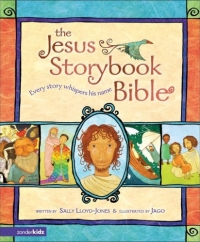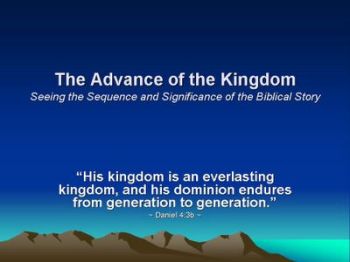 Not long ago, I passed along a recommendation for a new Bible Storybook called, The Jesus Storybook Bible. I called it a “storybook for preachers“, and explained why a Christ-centered Biblestory book could help many a preacher.
Not long ago, I passed along a recommendation for a new Bible Storybook called, The Jesus Storybook Bible. I called it a “storybook for preachers“, and explained why a Christ-centered Biblestory book could help many a preacher.
Well, I came across an excellent and informative interview of the author, Sally Lloyd-Jones about this book over at Eucatastrophe. I’m going to post a few excerpts here, and encourage you all to go read the interview. And more than that, you’ve got to get the book. I did, and I’m loving it. You can expect a review of it before too long.
I found it so moving when I started to discover how the Old Testament is basically one long record of failure””the failure of God’s people time and time again to live rightly, to rescue themselves””and that the stories in the Old Testament are all getting us ready for the One who is coming. They are all signposts to the True Hero, the True King, the True Prince, the True Servant, the greater David, the greater Daniel. The Rescuer.
As a child, I thought the Bible was packed with rules you had to keep (or God wouldn’t love you) and heroes setting examples you had to follow (or God wouldn’t love you). I thought, in short, that the Bible was all about me and what I should (or shouldn’t) be doing. Until I read a Story.
It’s the Story running like a golden stream underneath all the other stories in the Bible: the story of how God loves his children and comes to rescue them. Suddenly, I realized the Bible wasn’t about me and what I should be doing at all. It was about God and what he had done. And it changed everything…
It sounds strange, but the consistent reaction from many adults is that it makes them weep. (I think that’s good? Hope so!) Parents are reading it to one another as their devotional before bed. Pastors are using it to help them with their preaching. I heard someone call it, “the storybook for preachers” [she might be referring to my blogpost here!!].
And of course families are reading it together. Teenagers and college students have told me they are enjoying it. I heard from one dad that his young boys listen to each of the stories and as they near the end of each story, they whisper just one word: “Jesus.” I couldn’t ask for a better response. May all of us to be whispering his name in all the stories of our lives!
Be sure to read the entire interview!! (The comments discuss the Christ-centered treatment of the Old Testament in more depth.)
